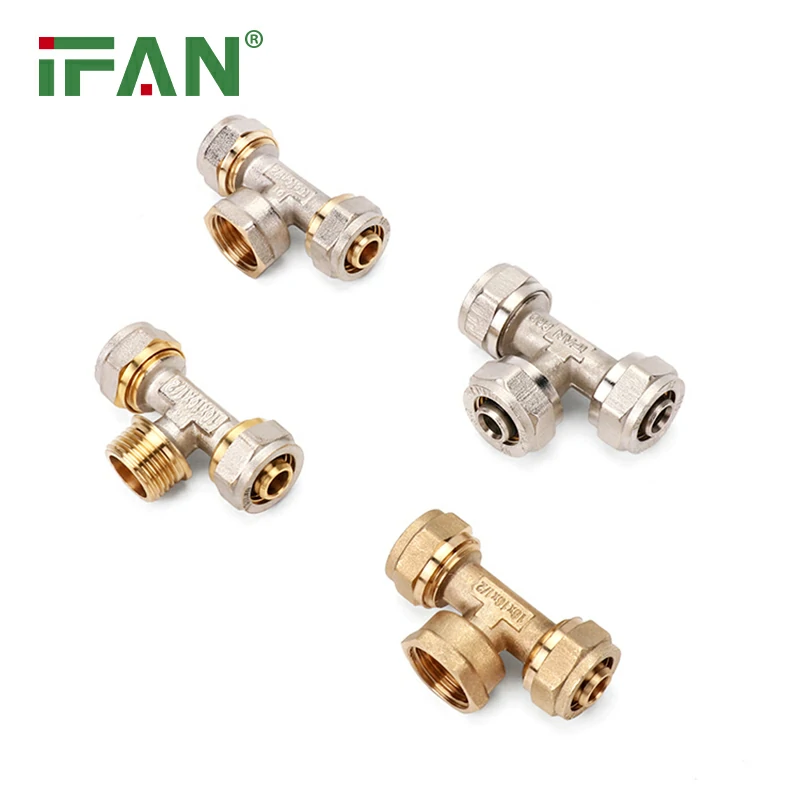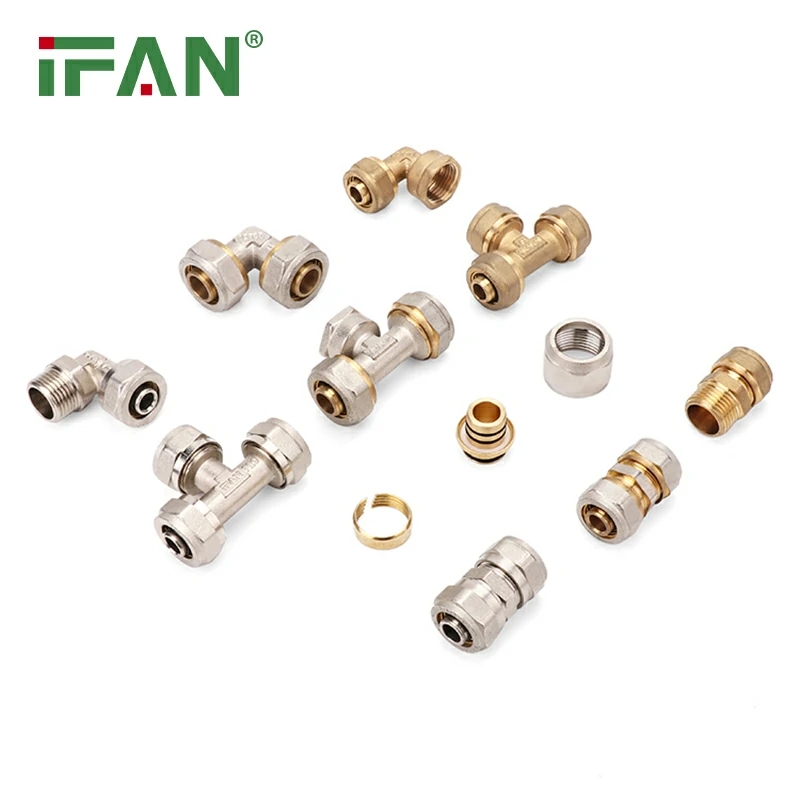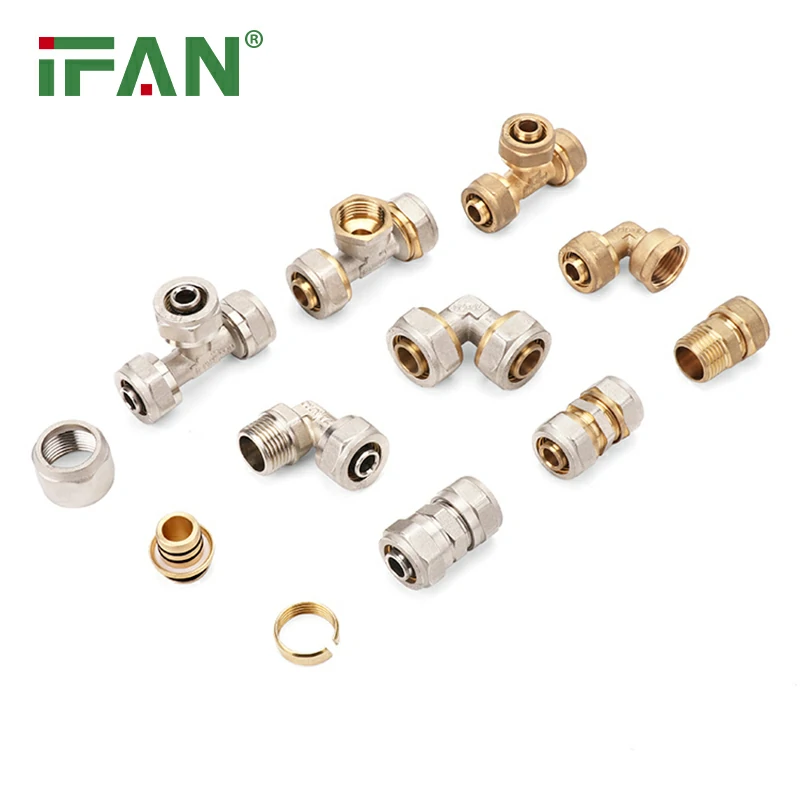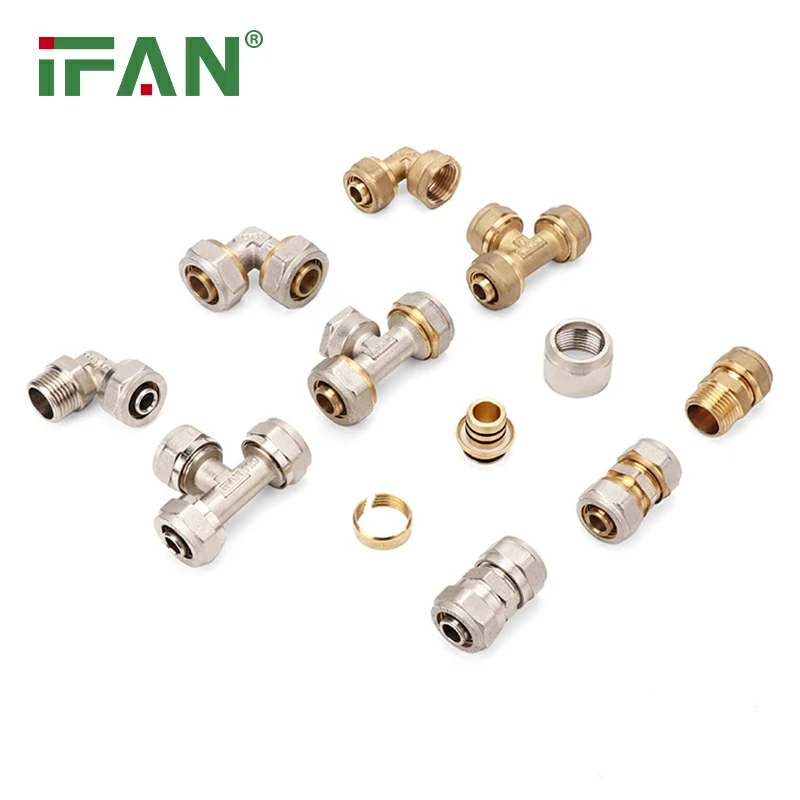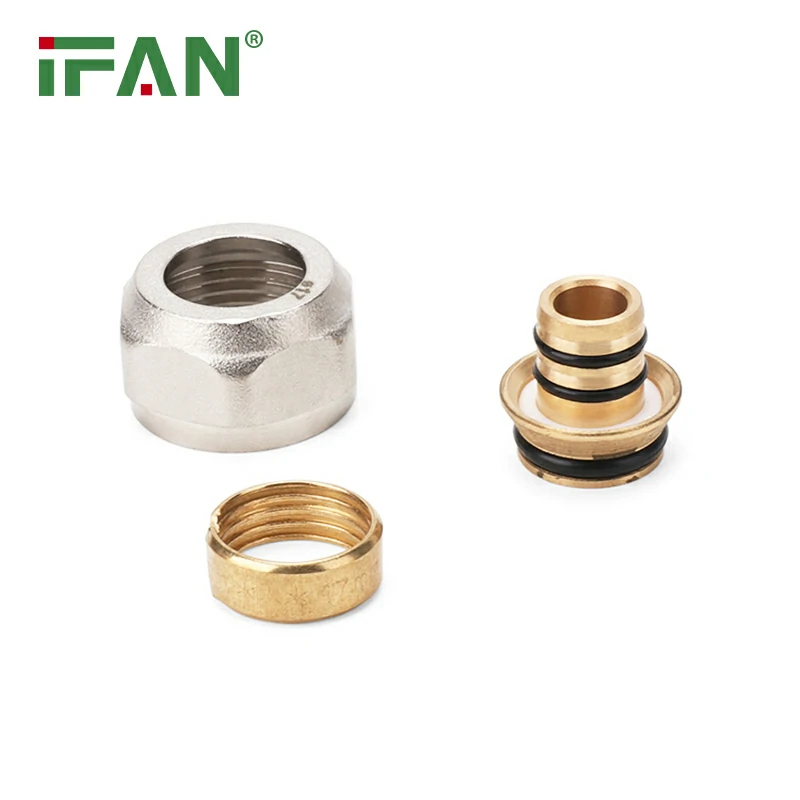Get to Know PEX Pipe Fittings and Connectors
If you’re looking to install or replace plumbing in your home or business, you may have come across the term PEX pipe fittings or pipe connectors. These fittings are essential components that help join PEX pipes together and create a secure, leak-free plumbing system. In this article, we’ll cover everything you need to know about PEX pipe fittings, from what they are and how they work to the different types available and how to choose the right ones for your project.
At its most basic, a PEX pipe fitting is a component that connects two or more PEX pipes together. PEX pipes are a type of flexible plastic tubing that are commonly used in plumbing systems due to their durability, affordability, and ease of installation. PEX pipe fittings come in a variety of shapes and sizes, and each type is designed to perform a specific function, such as connecting pipes at different angles, stopping the flow of water, or transitioning from PEX to another type of pipe.
Whether you’re a seasoned plumber or a DIY enthusiast, understanding the different types of PEX pipe fittings and how they work is essential for any plumbing project. In the following sections, we’ll take a closer look at the different types of PEX pipe fittings available, their pros and cons, and how to choose the right fittings for your specific needs.
What are PEX Pipe Fittings?
PEX pipe fittings, also known as pipe connectors, are essential components in a PEX plumbing system. These fittings are used to connect PEX pipes to each other or to other types of pipes or fixtures.
PEX pipe fittings come in various shapes and sizes, including straight, elbow, tee, coupling, and valve fittings. They are made from different materials, such as brass, copper, and plastic, and can be used for both hot and cold water applications.
One of the main advantages of PEX pipe fittings is their ease of installation. They can be easily connected to PEX pipes using crimp or clamp methods, which do not require any special tools or skills. This makes PEX plumbing systems a popular choice for DIY enthusiasts and professional plumbers alike.
Another advantage of PEX pipe fittings is their flexibility. PEX pipes can bend and flex without breaking, which makes them ideal for use in tight spaces and around corners. PEX fittings can also be rotated after installation, which allows for easy adjustment and alignment of pipes and fixtures.
Types of PEX Pipe Fittings
PEX pipe fittings are an essential component of any PEX plumbing system. They are used to connect PEX pipes together and to other plumbing fixtures or appliances. There are several types of PEX pipe fittings available in the market, each with its own advantages and disadvantages. In this section, we will discuss the four most common types of PEX pipe fittings: Crimp Fittings, Clamp (Cinch) Fittings, Push-Fit (SharkBite) Fittings, and Expansion Fittings.
Crimp Fittings
Crimp fittings are the most commonly used type of PEX pipe fittings. They are made of brass or poly-alloy and are secured to the PEX pipe using a crimping tool. The crimping tool compresses a metal ring around the PEX pipe and the fitting, creating a secure connection. Crimp fittings are easy to install and are relatively inexpensive. They are suitable for use in both residential and commercial plumbing systems.
Clamp (Cinch) Fittings
Clamp fittings, also known as cinch fittings, are similar to crimp fittings in that they are made of brass or poly-alloy. However, instead of using a crimping tool, clamp fittings use a stainless-steel ring that is compressed around the PEX pipe and the fitting using a special clamp tool. Clamp fittings are easy to install and are suitable for use in both residential and commercial plumbing systems. They are slightly more expensive than crimp fittings but are considered to be more reliable and long-lasting.
Push-Fit (SharkBite) Fittings
Push-fit fittings, also known as SharkBite fittings, are the easiest type of PEX pipe fittings to install. They do not require any special tools or crimping/clamping equipment. Instead, they use a simple push-fit mechanism that allows the PEX pipe to be pushed into the fitting, creating a secure connection. Push-fit fittings are suitable for use in both residential and commercial plumbing systems. They are slightly more expensive than crimp and clamp fittings but are considered to be the most convenient and user-friendly option.
Expansion Fittings
Expansion fittings are a relatively new type of PEX pipe fitting. They use a unique expansion method that involves expanding the PEX pipe and the fitting using a special expansion tool. The expanded PEX pipe is then inserted into the fitting, creating a secure connection. Expansion fittings are suitable for use in both residential and commercial plumbing systems. They are more expensive than crimp, clamp, and push-fit fittings but are considered to be the most reliable and long-lasting option.
Installing PEX Pipe Fittings
Installing PEX pipe fittings is a straightforward process that can be done by anyone with basic plumbing skills. Here is a step-by-step guide to help you install PEX pipe fittings:
Preparing the PEX Pipe
The first step in installing PEX pipe fittings is to prepare the PEX pipe. Here’s how:
- Cut the PEX pipe to the desired length using a PEX pipe cutter.
- Remove any burrs or rough edges from the cut end of the pipe using a deburring tool.
- Slide a PEX fitting onto the end of the pipe, making sure it is the correct size and type for your application.
Fitting the PEX Pipe
Once you have prepared the PEX pipe, it’s time to fit it into place. Here’s how:
1.Apply a thin layer of PEX lubricant to the inside of the fitting.
2.Insert the end of the PEX pipe into the fitting, making sure it is fully seated.
3.Use a crimping tool to crimp the ring around the outside of the fitting, securing it in place.
4.Repeat the process for any additional fittings.
Testing the Connection
After fitting the PEX pipe, it’s important to test the connection to ensure it is secure and leak-free. Here’s how:
- Turn on the water supply and allow the system to pressurize.
- Check the connection for any leaks or drips.
- If there are no leaks, turn off the water supply and proceed with the rest of your plumbing project.
- If there are leaks, turn off the water supply and recheck the connection, making sure it is fully seated and properly crimped.
Advantages of PEX Pipe Fittings
PEX pipe fittings have become increasingly popular in recent years due to their numerous advantages over traditional copper and PVC pipe connectors. In this section, we will discuss some of the key benefits of using PEX pipe fittings.
Flexibility
One of the most significant advantages of PEX pipe fittings is their flexibility. PEX pipes are highly flexible, which means they can be bent and shaped to fit into tight spaces and around corners without the need for additional fittings or connectors. This flexibility also makes PEX pipes more resistant to damage from freezing and thawing, making them an ideal choice for cold climates.
Durability
PEX pipe fittings are highly durable and resistant to corrosion, making them a long-lasting and reliable option for plumbing installations. Unlike copper pipes, which can corrode over time, PEX pipes are designed to withstand harsh environments and are less likely to develop leaks or other problems over time.
Cost-Effective
Another advantage of PEX pipe fittings is their cost-effectiveness. PEX pipes are generally less expensive than copper pipes, and they require fewer fittings and connectors, which can help to reduce installation costs. Additionally, PEX pipes are easier to install than traditional pipes, which can save time and money on labor costs.
Overall, PEX pipe fittings offer a range of benefits over traditional plumbing materials. Their flexibility, durability, and cost-effectiveness make them an excellent choice for a wide range of plumbing applications.
Disadvantages of PEX Pipe Fittings
Not Suitable for Outdoor Use
PEX pipe fittings are not suitable for outdoor use. They can be damaged by exposure to sunlight, which can cause them to become brittle and crack. This can lead to leaks and other problems. PEX pipe fittings should be installed indoors or in areas that are protected from sunlight.
Not Suitable for High-Temperature Applications
PEX pipe fittings are not suitable for high-temperature applications. They can melt or deform when exposed to high temperatures, which can cause leaks and other problems. PEX pipe fittings should not be used in applications where the temperature exceeds their maximum rated temperature.
Not Compatible with Certain Chemicals
PEX pipe fittings are not compatible with certain chemicals. They can be damaged by exposure to chemicals such as chlorine, which can cause them to become brittle and crack. This can lead to leaks and other problems. PEX pipe fittings should not be used in applications where they will be exposed to chemicals that are not compatible with them.
While PEX pipe fittings have many advantages, they also have some disadvantages that should be considered before they are used in any application. By understanding these disadvantages, we can make informed decisions about whether PEX pipe fittings are the right choice for our plumbing needs.
Conclusion
Now that we have covered everything you need to know about PEX pipe fittings and connectors, you should feel confident in your ability to choose the right fittings for your plumbing project.
Remember to always use fittings that are compatible with your PEX tubing and to follow the manufacturer’s instructions for installation. Proper installation is key to ensuring a leak-free and long-lasting plumbing system.
When it comes to choosing fittings, there are many options available, including crimp, clamp, push-fit, and compression fittings. Each type has its advantages and disadvantages, so it’s important to consider your specific needs and preferences before making a decision.
Overall, PEX pipe fittings and connectors offer a reliable and cost-effective solution for plumbing projects. With their ease of installation, flexibility, and resistance to corrosion and freezing, they are a great choice for both DIYers and professional plumbers alike.

